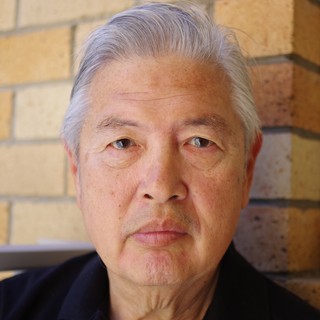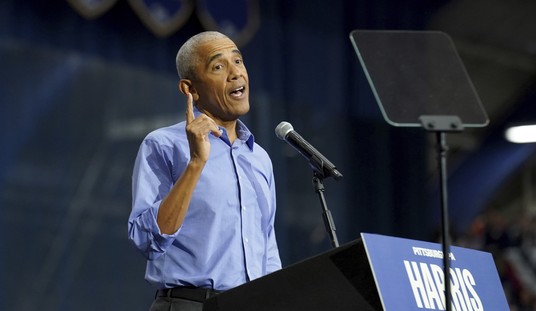While it’s tempting to think of every epidemic as a unique event, a disruption of “normal” life which will eventually return to the old routine, professionals know that it part of an endless struggle between humanity and disease, a struggle that has lasted — and will last — for as long as the species exists. “Every outbreak provides an opportunity to gain important information, some of which is associated with a limited window of opportunity … Critical to moving the field forward, even in the context of an outbreak, is ensuring that investigational products are evaluated in scientifically and ethically sound studies.”
From a certain point of view each outbreak, though full of tragedy, represents an opportunity to learn more about the eternal enemy. The knowledge may come too late for the present encounter but it will be useful next time. If this is reminiscent of a military mindset, it should be. The U.S. has deliberately approached epidemics like an invasion.
Since the 2001 terrorist attacks, the United States government has allocated nearly $50 billion to address the threat of biological weapons. U.S. funding for bioweapons-related activities focuses primarily on research for and acquisition of medicines for defense. Funding also goes toward stockpiling protective equipment, increased surveillance and detection of biological agents, and improving state and hospital preparedness. The increase in this type of funding is mainly for Project BioShield. Significant funding also goes to Biomedical Advanced Research and Development Authority (BARDA), part of HHS.
Key to finding new weapons is what BARDA calls “public-private partnerships” designed to tap U.S. scientific and industrial capability. For example, it is now working with Johnson & Johnson and Sanofi to develop vaccines against Covid-19 and there are similar efforts underway in the areas of diagnostics and treatment. But even the most rapid effort can take months.
“If we’re putting all our hopes in a vaccine as being the answer, we’re in trouble,” Jason Schwartz, an assistant professor at Yale School of Public Health who studies vaccine policy, told me. The best-case scenario, as Schwartz sees it, is the one in which this vaccine development happens far too late to make a difference for the current outbreak.
In any case, putting all our hopes in a vaccine might not work when faced with a “Disease X,” a placeholder name for “a serious international epidemic could be caused by a pathogen currently unknown to cause human disease.” This represents something of a cross between Donald Rumsfeld’s “unknown unknown” and the attack on Pearl Harbor. You’ve got to do something fast. When time is of the essence, reliance must be placed on making maximum use of what is on hand, determining whether existing vaccines, tests and technologies have any effect against the new disease. The process for this is the FDA’s Emergency Use Authorization (EUA).
Under section 564 of the Federal Food, Drug, and Cosmetic Act (FD&C Act), the FDA Commissioner may allow unapproved medical products or unapproved uses of approved medical products to be used in an emergency to diagnose, treat, or prevent serious or life-threatening diseases or conditions caused by CBRN threat agents when there are no adequate, approved, and available alternatives.
That can be compared to fighting Nagumo’s fleet with the Yorktowns while awaiting the Essexes. It’s a way of finding the “unknown known,” the solution in our toolbox whose presence we are unaware of. The EUA can be thought of as the U.S. government’s way of taking calculated risks, undertaking an experiment whose chance of failure has been previously estimated and thought to be acceptable because an answer is needed now.
Even so, bureaucracy is naturally risk-averse. There is a “tendency to work with big companies even they are not likely to have the best approach. They’re large scale enterprises that are geared up to fight the last war. True innovation is needed, and scale is the enemy of innovation,” according to one biotech insider.
Government’s risk-aversion might leave solutions forever undiscovered, but its instinct to play it safe can be overcome by sufficient desperation. Individual patients with nothing to left lose can apply for the FDA’s compassionate use pathway. Similarly, a medical system desperate to stop a Disease X can relax EUAs to correspond to the degree of risk warranted by the emergency. Under those circumstances, the bureaucracy reaches out to smaller companies and tries innovative solutions because they have to. Necessity proves the mother of invention precisely because a crisis makes heretofore impossible endeavors momentarily possible. Samuel Johnson once observed: “Depend upon it, sir, when a man knows he is to be hanged in a fortnight, it concentrates his mind wonderfully.”
So “every outbreak provides an opportunity to gain important information, some of which is associated with a limited window of opportunity” because once the crisis is over things go back to the same old, same old. Until the next time.
Follow Wretchard on Twitter or visit Wretchard.com
Support the Belmont Club by purchasing from Amazon through the links below.
Books:
Loserthink: How Untrained Brains Are Ruining America, by Scott Adams. The creator of Dilbert has come up with a guide to spot and avoid mental habits trapping victims in their own bubbles of reality, such as the inability to get ego out of your decisions, thinking with words instead of reasons, failing to imagine alternative explanations, and making too much of coincidences.
Humanity in a Creative Universe, by Stuart A. Kauffman. Best known for his philosophy of evolutionary biology, Kauffman calls into question science’s ability to ever accurately and precisely predict the future development of biological features in organisms. He argues that our preoccupation to explain all things with scientific law has deadened our creative natures and concludes that the development of life on earth is not entirely predictable, because no theory could ever fully account for the limitless variations of evolution.
Working , by Robert A. Caro. From the two-time Pulitzer Prize-winning biographer, an unprecedented memoir of his experiences researching and writing his acclaimed books.
Private Empire: ExxonMobil and American Power, by Steve Coll. A masterful result of Coll’s indefatigable reporting, this book draws on more than 400 interviews; field reporting from the halls of Congress to the oil-laden swamps of the Niger Delta; more than 1,000 pages of previously classified U.S. documents obtained under the Freedom of Information Act; heretofore unexamined court records; and many other sources. This is a defining portrait of ExxonMobil and the place of Big Oil in American politics and foreign policy.
For a list of books most frequently purchased by readers, visit my homepage.
Did you know that you can purchase some of these books and pamphlets by Richard Fernandez and share them with your friends? They will receive a link in their email and it will automatically give them access to a Kindle reader on their smartphone, computer or even as a web-readable document.
Open Curtains by George Spix and Richard Fernandez. Technology represents both unlimited promise and menace. Which transpires depends on whether people can claim ownership over their knowledge or whether human informational capital continues to suffer the Tragedy of the Commons.
The War of the Words, Understanding the crisis of the early 21st century in terms of information corruption in the financial, security and political spheres
Rebranding Christianity, or why the truth shall make you free
The Three Conjectures, reflections on terrorism and the nuclear age
Storming the Castle, why government should get small
No Way In at Amazon Kindle. Fiction. A flight into peril, flashbacks to underground action.
Storm Over the South China Sea, how China is restarting history in the Pacific.










Join the conversation as a VIP Member